- Oak barbel
- Beetle lifestyle
Big oak barbel - one of the most beautiful and large lumberjack beetleshaving Mediterranean roots. The insect can be found in Europe and Africa. It is also distributed in the vastness of our country, in Belarus, Ukraine and the Caucasus. The barbel has become popular not only because of its large size (the length of its body can reach up to 6.5 cm), the insect is one of the most dangerous pests of oak wood. Who is this oak barbel, or as it is also called black oak barbel, this article will tell.
Features
The large oak barbel is a fairly large beetle whose body has a shiny black and resinous color. A feature of this type of barbel is a mustache. To the touch, they are as silky as the abdomen of an insect. In females, their size corresponds to the length of the body, in males, they are much longer. The first segment of the mustache is almost matte, as it has a densely applied dotted line. The dimensions in length and width of the second segment are approximately comparable.
Elytra have a smooth surface, and only their apex is covered with a red-red hairline. On a wrinkled pronotum there are two pairs of spines. Below you can see what the oak barbel looks like in the photo.
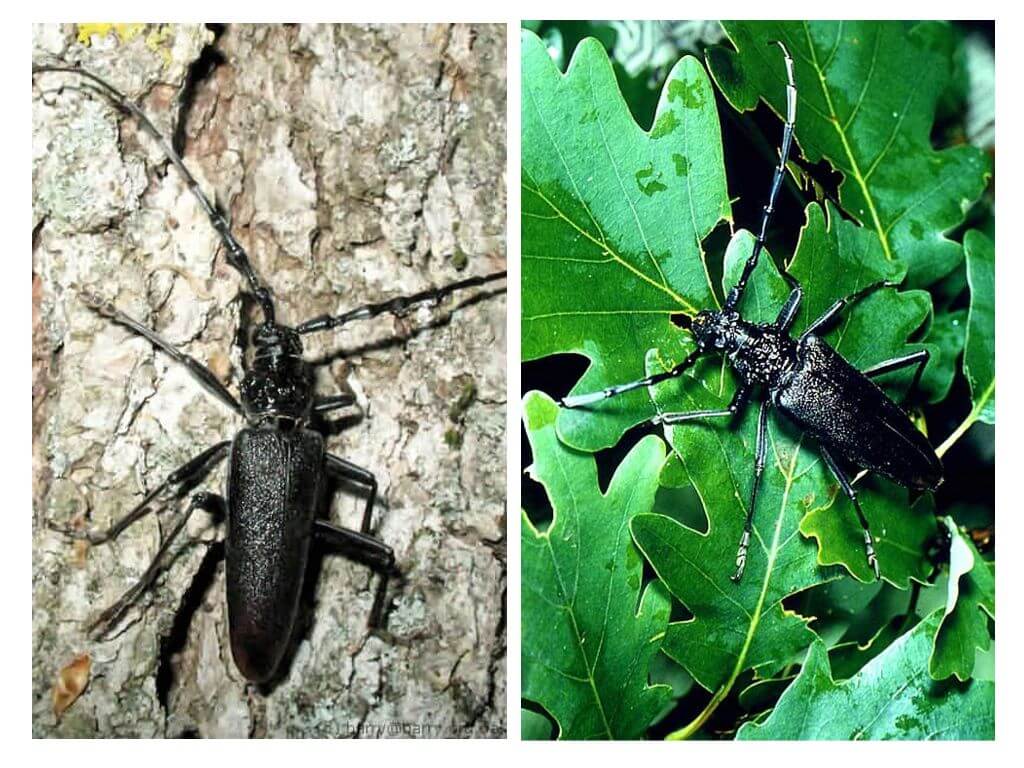
Lifestyle
Large oak barbels emerge from their secluded shelters in late May. They are especially active in early summer, preferring flights in the daytime. Favorite places of their living include freestanding trees or oak groves.
Interesting!
More often, insects settle on trees that secrete a special liquid - gum, which they like to feast on. Settling in the wood of a tree, beetles gnaw through long tunnels in it, which causes the plant to “cry” (excrete juice).
Much less often than large oak barbel can be found on walnut or apple trees. They do not have great love for ash, hawthorn and hazel.
Breeding
Despite the fact that the big oak barbel lives for about 3 months, the female manages to lay about a hundred eggs during this period. She looks for a place for laying with the help of a mustache, which serves as her body of smell (males, with the help of a mustache, look for a partner). When choosing a tree that serves barbel and home and a source of nutrition, insects examine its condition. More often bugs settle in dead or decaying wood. But they can also love a healthy tree, which is what causes damage to humans.
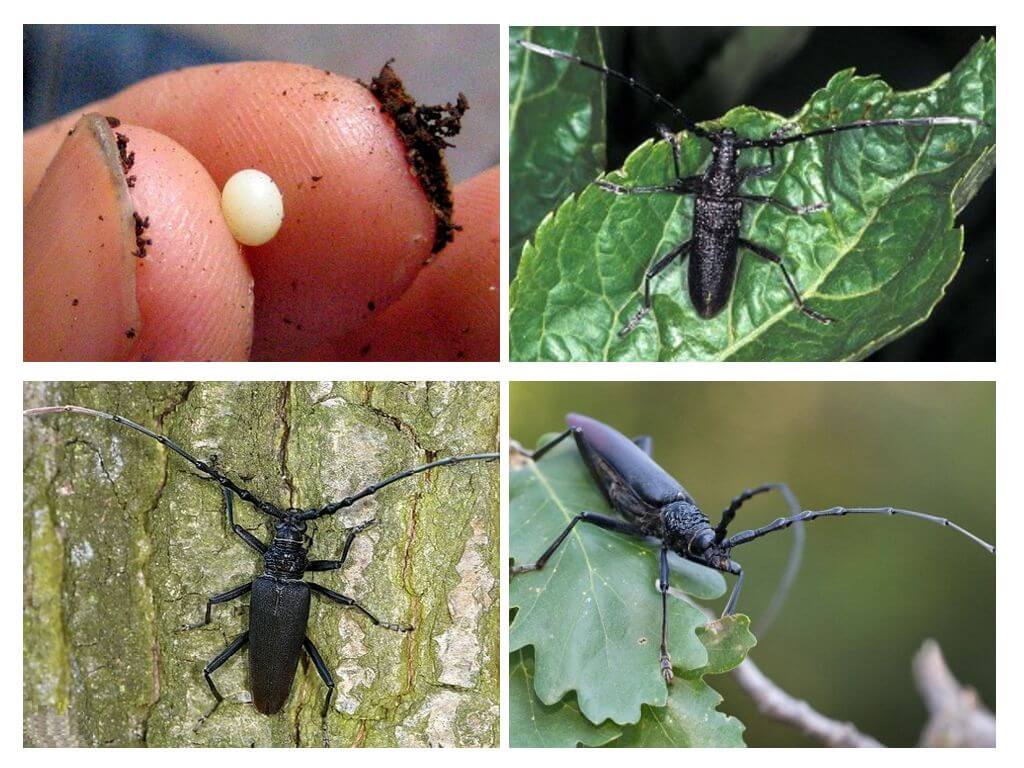
Usually, the female makes a cradle for future offspring in the cracks of the tree bark. Especially suitable for this are old oaks, hornbeams, elms or beeches. After 15 days, larvae emerge from the eggs, which develop for more than two years. A photo and description of the larva of a large oak barbel is not much different from the larvae of its relatives. This is a fairly large white or yellowish creature, which develops at a slow pace. The biennial larva grows to 5-6 cm, after another year, it can grow up to 9-10 cm, and in diameter - up to 2 cm.
On a small, brownish-red hue, the head of the larva contains 3 eyes and powerful jaws. Along the gnaws in the wood, it moves with the help of the abdominal and dorsal growths, which are also called corns. Before the pupation begins, the larva gnaws a tunnel in the tree, the length of which can reach 1 meter.At the end of such a move, the larva drills an oval hole, which serves as a bedroom for the future pupa. From this shelter she makes another tunnel through which an adult individual of a large oak barbel will emerge in the future. In the meantime, the larva covers it with particles of bark and wood fibers.
On a note!
The process of formation and growth of a large oak barbel, starting from an egg and ending with an adult, lasts about four years (depending on living conditions and weather).
About enemies
The oak barbel beetle has no less enemies than other insects. The woodpecker is particularly dangerous for the woodpecker, which eats the larvae living in the bark with great pleasure. There are also insects parasitizing on the eggs of the beetle (encyrtids). Predatory insects such as speckled moth, baby peanut or nutcracker are also dangerous for him.
What harm does
Big oak barbel is one of the most dangerous pests of wood. The damage it causes to the tree is already evident after the beetle larvae reach one year old. With a large accumulation of insects, the color of the foliage and its condition changes, it becomes wilted. Young shoots also dry up, which impedes the growth and development of the plant. Therefore desirable get rid of the pest. Damaged wood can subsequently be used only as firewood.
Therefore, in the old days, when a large settlement of beetles was discovered in oak groves, they tried to quickly get rid of infected plantations, uprooting or sanding all the remaining oak stumps. However, in our days there are not so many perennial oak forests left, and a large previously mustached pest has become no less rare. In connection with which he was even listed in the Red Book.
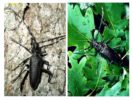

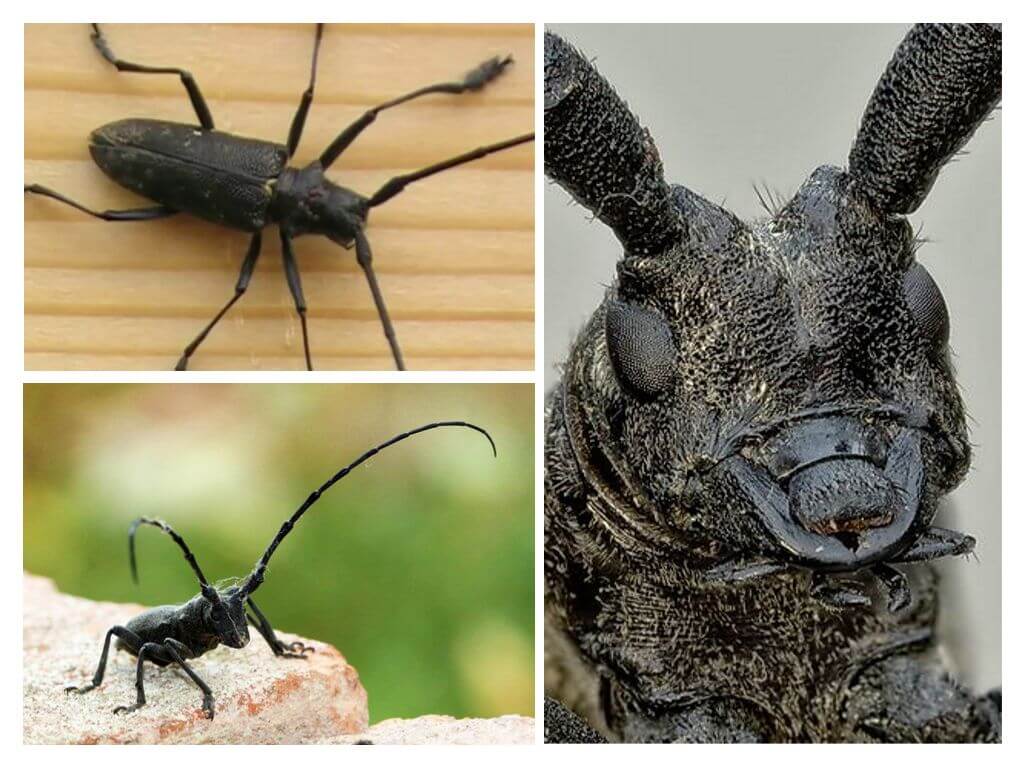
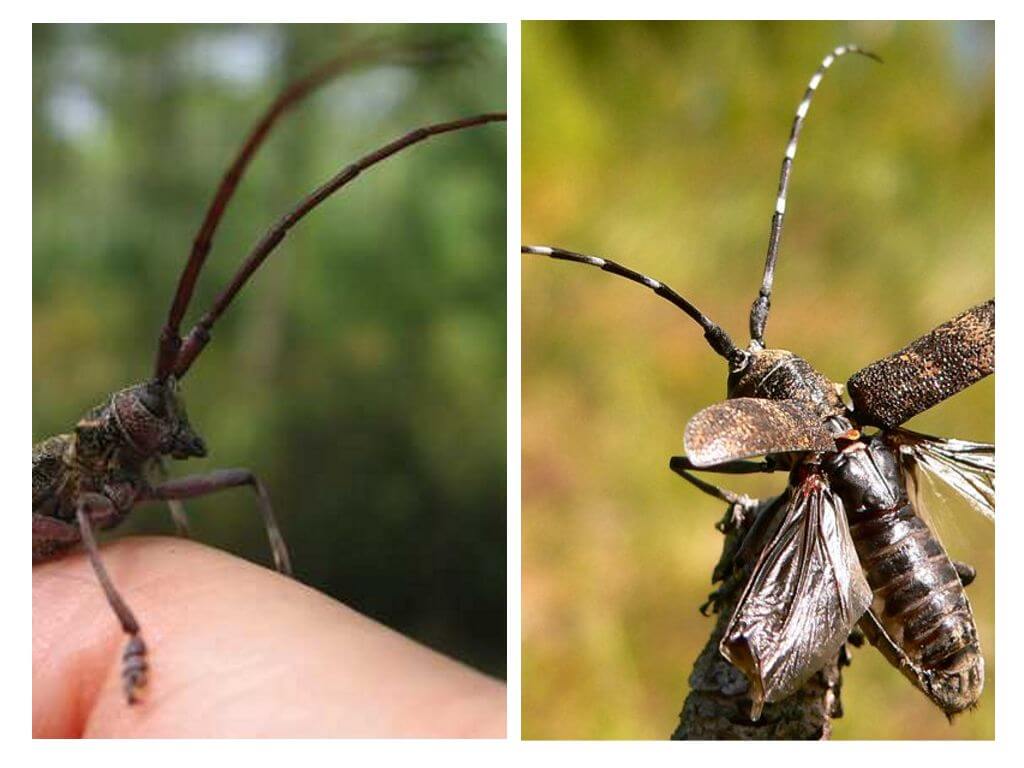
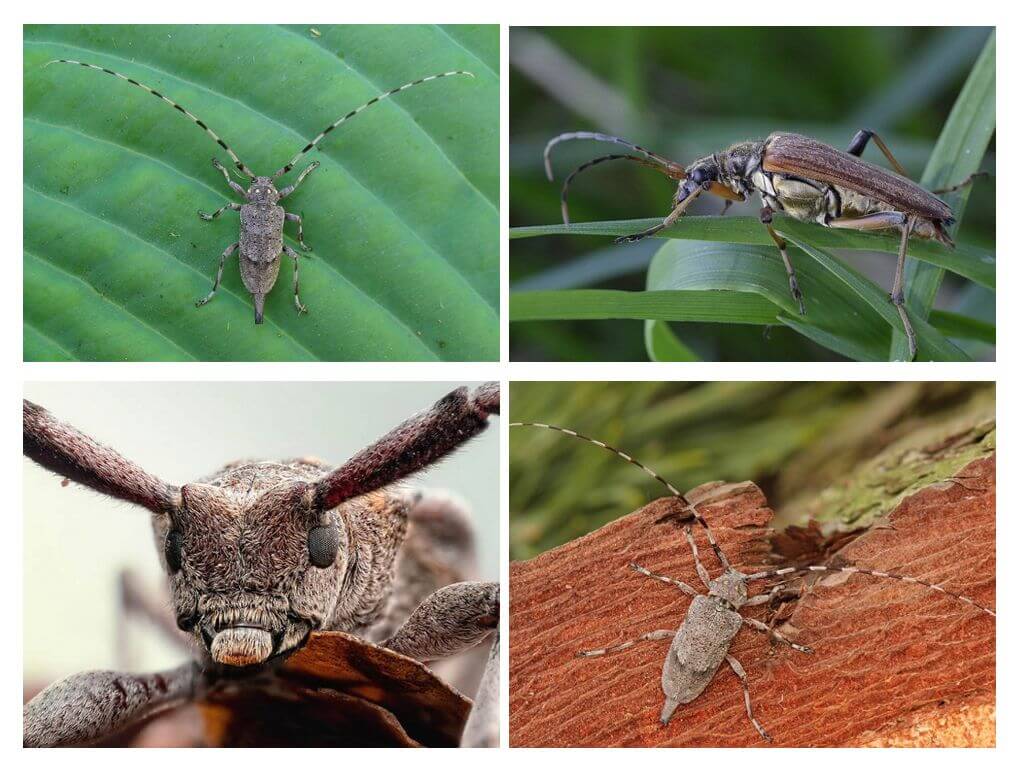
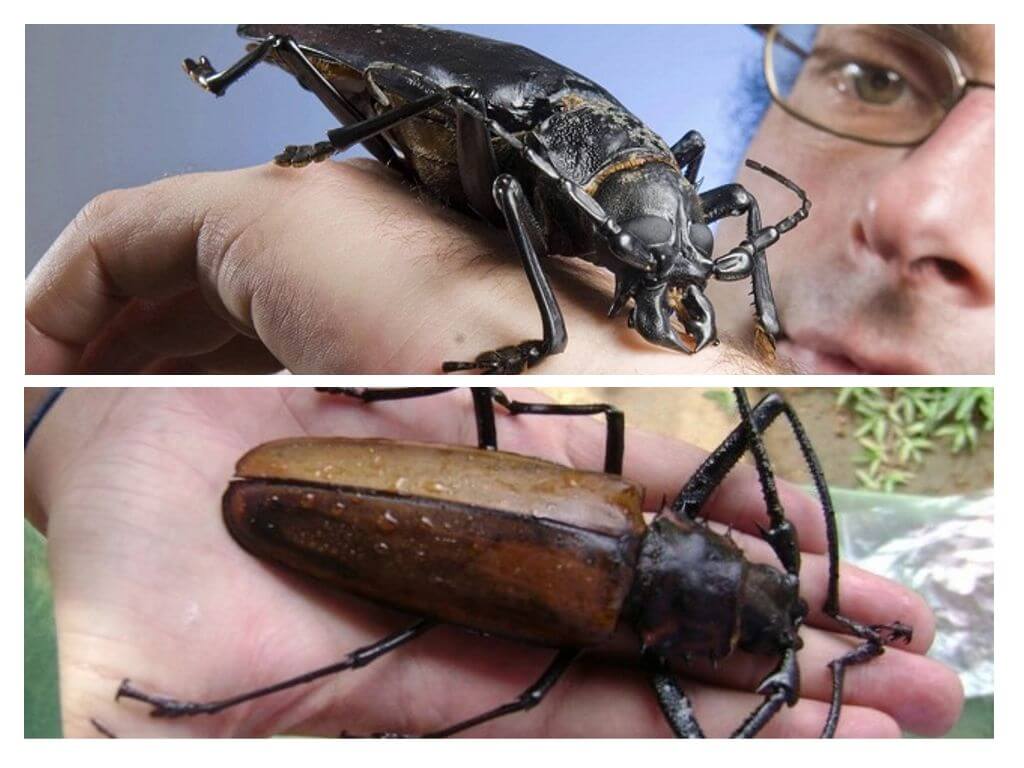
I found a beetle very similar in description in my country house. I don’t know what to do with it.
If this is a really big oak barbel, then it’s better to kill it.
Oak barbel is now quite rare. No wonder they are listed in the Red Book.
Just beauties, you won’t immediately think that they are pests.
The barbel has eaten around the house, flour is pouring everywhere.
Rather save your property. There are various ways of controlling, but with a large accumulation of insects it is better to use the services of specialists.
I know firsthand about oak barbel. All his life he worked as a forester and had to fight with them more than once. Now these beauties are almost gone.
I saw several such brilliant bugs on a stump. A neighbor said that such a rarity could cause serious harm.
Tried to keep such barbel at home. It didn’t work, everyone died.